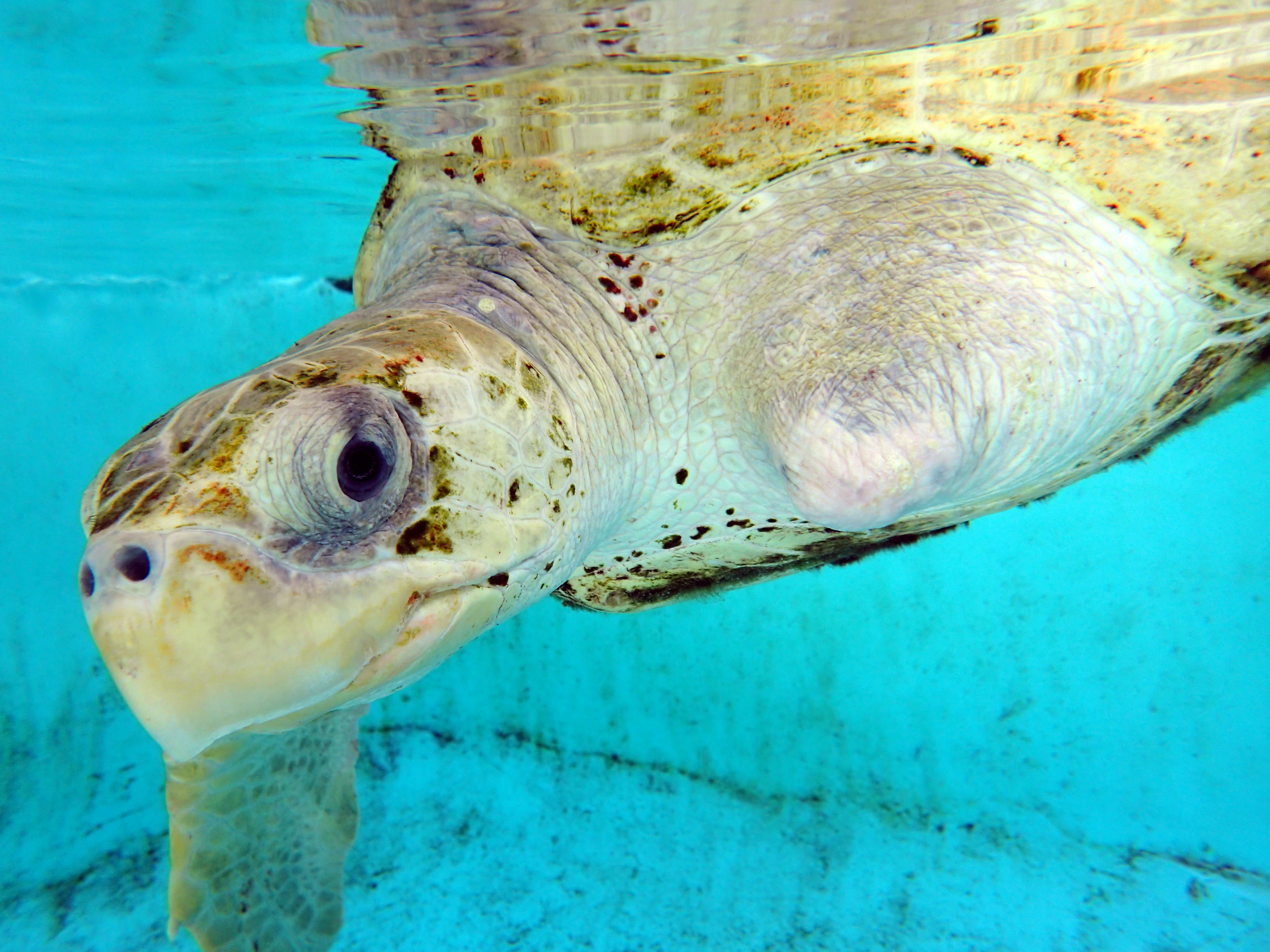
Ossy the turtle might be missing a limb, but she is one of the fortunate ones—few animals that feel the clinging grasp of a ghost net live long enough for their tale to be told. Ossy got lucky, and this is her story.
Just over two years ago, this olive ridley turtle was found in the Indian Ocean, tightly tangled in a ghost net. She was rescued by locals and taken to the Maldivian Sea Turtle Conservation Program (MSTCP), a centre set up by the Seamarc marine biology team in the heart of the Four Season Resort on the island of Laanda Giraavaru in the Maldives. Life has been far from easy for Ossy since then, but she is alive and she has a future—one that involves a new bionic flipper.
Unlike the hawksbill and green turtles that are regular visitors to the islands of the Indian Ocean, olive ridley turtles are not normally seen close to land. ‘These are pelagic animals,’ explains Sebastien Stradal, manager of the Marine Discovery Centre on Laanda Giraavaru. ‘They stay out in the ocean depths, feeding on squid and jellyfish.’
They’re also the smallest species of sea turtle, but they’re inquisitive animals—especially the females it seems—and it’s whilst investigating strange floating objects that they sometimes fall prey to deadly ghost nets. These are fishing nets and lines lost or deliberately jettisoned by boats. Often still connected to buoys, the nets drift around the ocean like ephemeral spectres, strangling wildlife, becoming snagged on rocks and coral, and continuing to ensnare fish for years.
The animals trapped inside the net commonly invite investigation from larger citizens of the sea, such as turtles, sharks, whales and dolphins, and often these creatures also become caught up in the mesh, typically with fatal results—especially for those who need to surface for gulps of air.
‘Sometimes turtles will snap their flipper bone after weeks of entanglement, as they desperately try to escape the net,’ says Stradal. Sadly, shortly after she was rescued, Ossy’s front left flipper had to be amputated because it was so badly damaged.

At about 20 years of age, Ossy is relatively young for an olive ridley, a species that commonly lives to 60 or 70. But although she’s youthful, another legacy of her encounter with the ghost net is that she is unable to dive. There are numerous possible reasons for this, as Stradal explains.
‘The turtles we rescue often have problems with their buoyancy,’ he told us. ‘They only swim on the water surface, have difficulty in submerging themselves and sometimes—as with Ossy—they’re unable to dive down for food. There can be various causes for this, including neurological and internal ear problems; lung infections; spinal injuries; gastrointestinal tract gas, due to infection or obstruction; or leakage from either a lung or the GI tract, resulting in accumulation of air in the coelom (body cavity).’
The Marine Discovery Centre is currently caring for six rescued olive ridley turtles, all female, and most regain their ability to dive following rehab. But, after two years of treatment, Ossy is no closer to getting underwater. It’s not through lack of effort. Ossy is a battler, according to Stradal and his staff, and with a full compliment of limbs they believe she would stand a much greater chance of getting beneath the surface, to hunt for her own food.
Fortunately, an aquarium on Tenerife in Spain’s Canary Islands—Loro Parque— has offered to take the turtle in as a donation from the Marine Discovery Centre, and they are planning to fit her with a prosthetic flipper. Since it was first attempted in 2005, several turtles have successfully been given false flippers, including this large loggerhead in Japan, whose front flippers were probably bitten off during a shark attack.

Once the artificial limb is attached, Ossy should be able to manoeuvre with much more freedom. She will never return to the wild—so she can’t be used as a satellite tracking device–carrying secret agent of the centre’s excellent research project, which is recording the olive ridleys’ movements along migration routes and across foraging grounds—but she can help spread awareness of the horror of the ghost net threat that haunts our oceans. Follow Ossy’s progress here.
